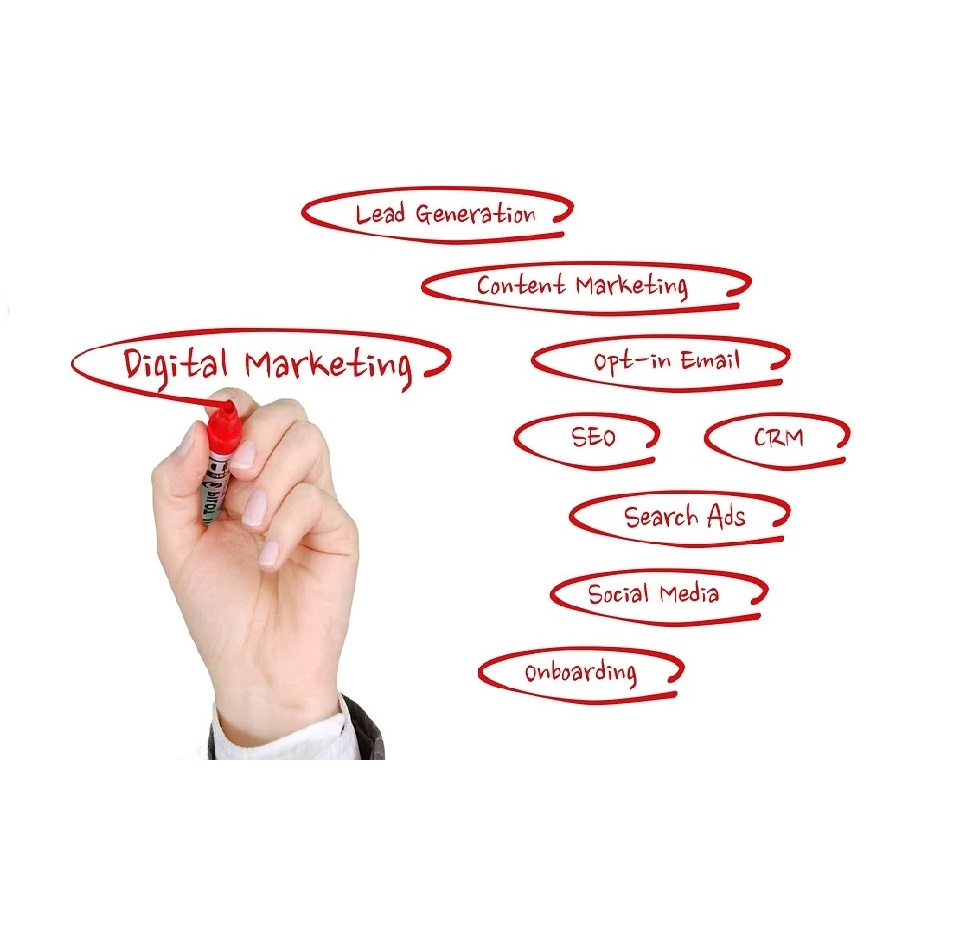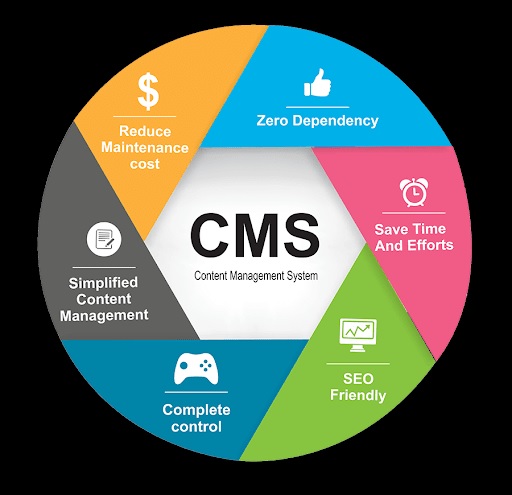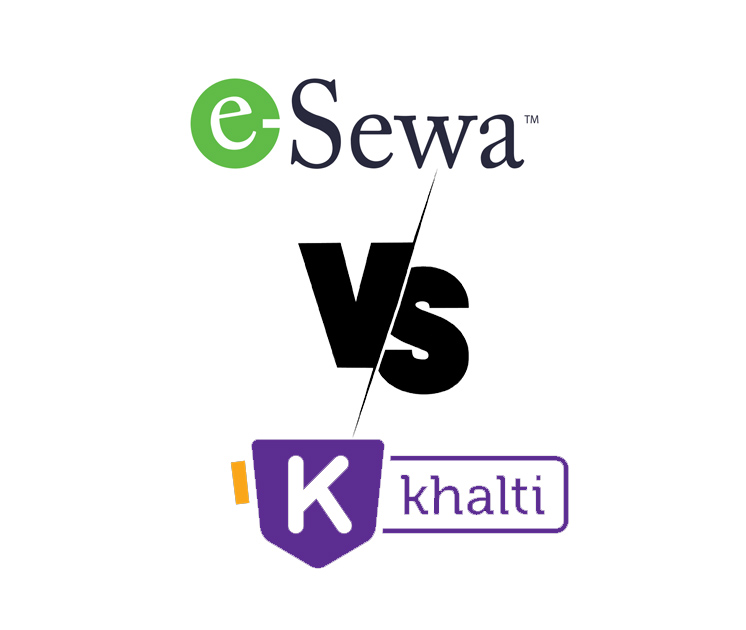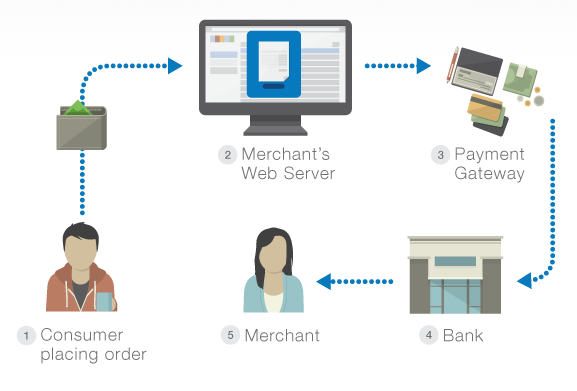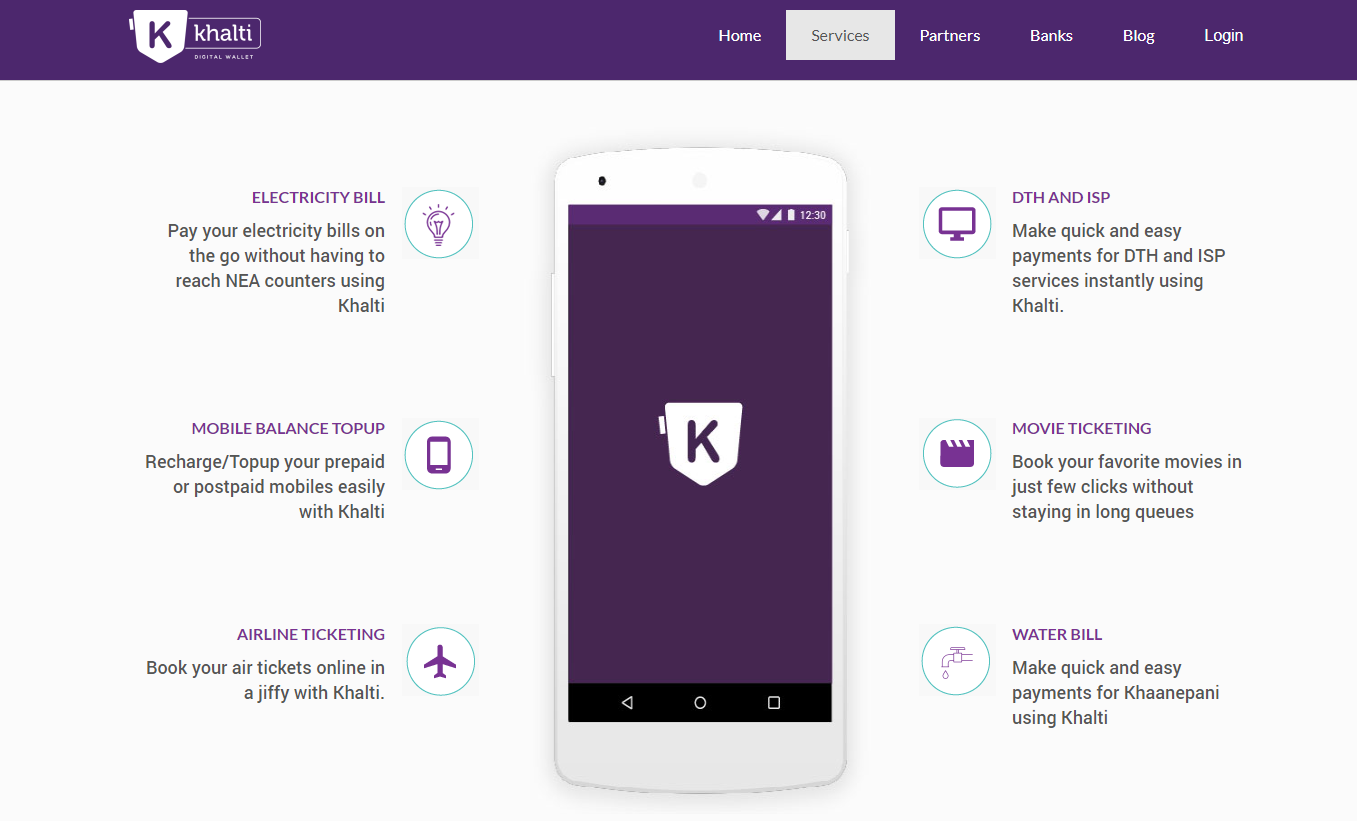What is Digital Marketing?
Digital marketing is the practice of using digital channels and technologies to promote products, services, or brands. With the widespread adoption of the internet, social media, and mobile devices, digital marketing has become an essential component of any modern marketing strategy.
There are several types of digital marketing channels that businesses can use, including search engine optimization (SEO), social media marketing, email marketing, content marketing, and pay-per-click advertising (PPC). Each of these channels has its strengths and can be used in different ways to reach and engage with target audiences.
What are the advantages of Digital Marketing?
One of the key advantages of digital marketing is its ability to target specific audiences with relevant and personalized content. This can be achieved through a variety of tactics, such as analyzing user data, segmenting audiences, and creating buyer personas.
Another advantage of digital marketing is its measurability. Digital channels allow businesses to track and measure the effectiveness of their campaigns in real-time, enabling them to make data-driven decisions and optimize their strategies for better results.
However, digital marketing also presents several challenges. With so many businesses competing for online attention, it can be challenging to stand out and capture the attention of target audiences. Additionally, the constantly evolving digital landscape requires businesses to stay up-to-date with the latest technologies, trends, and best practices to remain competitive.
Overall, digital marketing is a critical component of any modern marketing strategy. By leveraging the power of digital channels and technologies, businesses can reach and engage with their target audiences in more effective and personalized ways, ultimately driving growth and success in the digital age.
What are the Key Factors of Digital Marketing?
There are several key factors that are important in digital marketing. Here are some of the most essential ones:
- Audience Understanding: Understanding your target audience is crucial for creating effective digital marketing campaigns. This includes knowing their demographics, interests, behaviors, pain points, and motivations.
- Clear Goals: Setting clear goals and objectives is essential in digital marketing. Without specific goals, it can be challenging to measure success and determine whether your campaigns are effective.
- Relevant and Valuable Content: Providing valuable and relevant content that aligns with the needs and interests of your target audience is essential. This can include blog posts, social media updates, videos, podcasts, and other types of content.
- Consistent Branding: Maintaining consistent branding across all digital channels is critical to building a strong brand image and increasing brand awareness.
- Analytics and Data: Analytics and data provide valuable insights into your audience, campaign performance, and opportunities for improvement. Regularly tracking and analyzing this data can help you make informed decisions and optimize your campaigns for better results.
- SEO: Search engine optimization (SEO) is essential for increasing visibility and driving traffic to your website. Optimizing your website for search engines can help you rank higher in search results and attract more qualified leads.
- Social Media Presence: Having a strong social media presence can help you connect with your target audience and promote your brand. Consistently posting engaging and relevant content on social media can help you increase followers, drive traffic to your website, and improve brand awareness.
Overall, the key factor in digital marketing is a strategic and data-driven approach that focuses on providing value to your target audience and achieving specific business goals.
Why is Digital Marketing important?
Digital marketing is important for several reasons:
- Reach a wider audience: Digital marketing allows businesses to reach a global audience, regardless of their location. With the internet and social media, businesses can connect with customers from around the world, which is not possible with traditional marketing methods.
- Cost-effective: Digital marketing is more cost-effective than traditional marketing methods. For example, advertising on social media platforms or search engines is often less expensive than print or television advertising.
- Personalized targeting: Digital marketing allows businesses to target specific audiences based on their interests, demographics, and behaviors. This means that businesses can personalize their marketing messages to resonate better with their target audience, leading to higher engagement and conversion rates.
- Measurable results: Digital marketing allows businesses to track and measure the effectiveness of their campaigns in real-time. This means that businesses can make data-driven decisions and optimize their campaigns for better results.
- Builds brand awareness and reputation: Digital marketing can help businesses build brand awareness and reputation by creating valuable content that educates and entertains their target audience. This can lead to increased customer loyalty and trust.
What are the types of Digital Marketing?
There are several types of digital marketing, each with its own unique characteristics and benefits. Here are some of the most common types:
1. Search Engine Optimization (SEO)
2. Pay-Per-Click (PPC) Advertising
Pay-Per-Click (PPC) advertising is a digital marketing model where advertisers pay a fee every time someone clicks on one of their ads. PPC ads typically appear at the top and bottom of search engine results pages (SERPs) and on other online platforms like social media and display networks.
PPC advertising involves creating and targeting ads based on specific keywords, demographics, behaviors, and other targeting criteria. Advertisers bid on the keywords and targeting criteria they want their ads to appear for, and the search engine or advertising platform displays the ads based on their relevance, quality score, and bid amount.
There are several key benefits to PPC advertising, including:
- Targeted traffic: PPC advertising allows advertisers to reach a highly targeted audience based on specific keywords and other targeting criteria. This can lead to higher click-through rates and conversions.
- Cost-effective: With PPC advertising, advertisers only pay when someone clicks on their ad, making it a cost-effective way to drive targeted traffic to their website or landing page.
- Measurable results: PPC advertising platforms like Google Ads and Facebook Ads provide detailed analytics and reporting, allowing advertisers to track and measure the effectiveness of their campaigns in real-time.
- Flexibility: PPC advertising allows advertisers to adjust their targeting, bidding, and ad creative in real-time based on performance and changing business needs.
However, PPC advertising can also be complex and competitive, requiring ongoing optimization, monitoring, and analysis to achieve optimal results. Successful PPC campaigns often incorporate a mix of targeting, ad creative, and bidding strategies to achieve their goals, such as increasing website traffic, generating leads, or driving sales.
3. Social Media Marketing
SMM is a form of digital marketing that involves using social media platforms like Facebook, Twitter, Instagram, and LinkedIn to promote products or services, build brand awareness, and engage with customers. Social media marketing can take many forms, including organic social media posts, paid social media ads, influencer marketing, and social media contests and giveaways.
Here are some key elements of a successful social media marketing strategy:
- Audience targeting: Effective social media marketing starts with understanding your target audience and their interests, behaviors, and preferences. This can help you create relevant and engaging content that resonates with your audience and drives engagement and conversions.
- Content creation: Creating high-quality and engaging content is critical for social media marketing success. This can include social media posts, videos, images, infographics, and other types of content that align with your brand’s voice and messaging.
- Community management: Social media marketing involves engaging with your followers and responding to their comments, messages, and feedback. This can help build trust and loyalty with your audience and foster a sense of community around your brand.
- Paid social media advertising: Paid social media advertising allows you to target specific audiences with highly targeted and relevant ads. This can be a cost-effective way to drive traffic, leads, and sales to your website or landing page.
- Influencer marketing: Influencer marketing involves partnering with individuals who have a large following on social media or other online platforms to promote your products or services. This can help reach a wider audience and build trust and credibility with your target market.
- Analytics and reporting: Social media marketing requires ongoing analysis and monitoring to track performance, measure results, and optimize campaigns. This can involve using analytics tools like Facebook Insights, Twitter Analytics, or Google Analytics to track engagement, clicks, and conversions.
Effective social media marketing can help build brand awareness, drive website traffic, generate leads, and increase conversions and revenue. However, it also requires ongoing effort and strategic planning to achieve optimal results.
4. Content Marketing
It is a strategic marketing approach that involves creating and sharing valuable, relevant, and consistent content to attract and retain a clearly defined audience, with the goal of driving profitable customer action. Content marketing can take many forms, including blog posts, videos, social media posts, infographics, ebooks, white papers, podcasts, and more.
Here are some key elements of a successful content marketing strategy:
- Audience research: Effective content marketing starts with understanding your target audience and their needs, pain points, and interests. This can help you create content that resonates with your audience and provides value to them.
- Content creation: Creating high-quality and engaging content is critical for content marketing success. This can include blog posts, videos, infographics, and other types of content that align with your brand’s voice and messaging.
- Content distribution: Once you have created your content, you need to distribute it to your target audience through various channels, such as social media, email marketing, and content syndication. This can help increase your content’s reach and visibility.
- SEO optimization: Search engine optimization (SEO) is the process of optimizing your content to rank higher in search engine results pages (SERPs). This involves researching and targeting relevant keywords, optimizing your meta tags and headers, and building high-quality backlinks to your content.
- Analytics and reporting: Content marketing requires ongoing analysis and monitoring to track performance, measure results, and optimize campaigns. This can involve using analytics tools like Google Analytics to track engagement, traffic, and conversions.
Effective content marketing can help build brand awareness, drive website traffic, generate leads, and increase conversions and revenue. However, it also requires ongoing effort and strategic planning to achieve optimal results. A successful content marketing strategy requires a deep understanding of your target audience, high-quality content creation, distribution through multiple channels, and ongoing optimization based on analytics and performance metrics.
5. Email Marketing
It is a form of direct marketing that involves sending promotional or informative messages to a targeted group of people via email. Email marketing is a cost-effective way to reach a large number of people and can be used to build relationships with customers, drive sales, and promote brand awareness.
Here are some key elements of a successful email marketing strategy:
- Email list building: Effective email marketing starts with building a high-quality email list. This can be done by offering incentives like discounts or freebies to encourage people to subscribe to your email list, or by collecting email addresses from people who have already interacted with your brand.
- Segmentation and targeting: Segmentation and targeting involves dividing your email list into smaller groups based on common characteristics like demographics, interests, or behaviors. This allows you to send more personalized and relevant messages that are more likely to resonate with your audience.
- Email content creation: Creating high-quality and engaging email content is critical for email marketing success. This can include newsletters, promotional emails, welcome emails, and more. Your email content should be aligned with your brand’s voice and messaging and should provide value to your subscribers.
- Email design and formatting: Email design and formatting are also important for email marketing success. Your emails should be visually appealing, easy to read, and optimized for mobile devices.
- Email automation: Email automation allows you to send targeted and timely messages to your subscribers based on their behavior or preferences. This can include triggered emails like abandoned cart emails, welcome series, or re-engagement campaigns.
- Analytics and reporting: Email marketing requires ongoing analysis and monitoring to track performance, measure results, and optimize campaigns. This can involve using analytics tools like email open rates, click-through rates, and conversion rates.
Effective email marketing can help build relationships with customers, drive sales, and promote brand awareness. However, it also requires ongoing effort and strategic planning to achieve optimal results. A successful email marketing strategy requires high-quality email list building, segmentation and targeting, engaging email content creation, effective email design and formatting, automation based on behavior and preferences, and ongoing optimization based on analytics and performance metrics.
6. Affiliate Marketing
Affiliate marketing is a type of performance-based marketing where a business rewards one or more affiliates for each sale or lead generated through the affiliate’s marketing efforts. In other words, affiliates promote a company’s products or services to their own audience, and when a sale is made, the affiliate receives a commission.
Here are some key elements of a successful affiliate marketing strategy:
- Affiliate recruitment: The first step in affiliate marketing is to recruit affiliates who have a relevant audience for your products or services. This can be done by creating an affiliate program and promoting it through various channels, such as social media, affiliate networks, or targeted outreach.
- Affiliate tracking: Once you have recruited affiliates, you need to track their performance to ensure that they are driving results. This can be done using affiliate tracking software, which tracks clicks, sales, and other metrics to determine the commission owed to each affiliate.
- Affiliate promotion: Affiliates promote your products or services through various channels, such as their website, social media, email marketing, or paid advertising. They may use a range of tactics to promote your brand, such as creating product reviews, writing blog posts, or sharing promotional offers.
- Commission structure: The commission structure determines how much commission an affiliate receives for each sale or lead generated. This can vary depending on the product or service being promoted and the type of affiliate program.
- Affiliate management: Effective affiliate management involves building relationships with affiliates, providing them with the resources they need to promote your products or services, and providing regular communication and support.
Effective affiliate marketing can help drive sales, increase brand awareness, and expand your reach to new audiences. However, it also requires ongoing effort and strategic planning to achieve optimal results. A successful affiliate marketing strategy requires effective affiliate recruitment, tracking and management, engaging affiliate promotion, a clear commission structure, and ongoing optimization based on performance metrics.
7. Influencer Marketing
Influencer marketing is a type of marketing that involves partnering with individuals who have a strong following on social media or other digital platforms to promote a product, service, or brand. Influencers are typically individuals who have established a loyal and engaged audience through their content and personal brand.
Here are some key elements of a successful influencer marketing strategy:
- Influencer identification: The first step in influencer marketing is to identify potential influencers who have a relevant audience for your product or service. This can be done using social media tools or influencer marketing platforms, or by conducting manual research to find influencers in your niche.
- Influencer outreach: Once you have identified potential influencers, you need to reach out to them and establish a relationship. This can involve sending a personalized message or email, providing them with product samples or other incentives, and establishing clear expectations for the partnership.
- Campaign creation: The next step is to create a campaign that aligns with your brand and messaging, and that will resonate with the influencer’s audience. This can involve creating unique content, such as product reviews, tutorials, or sponsored posts, and providing the influencer with the resources they need to create engaging and high-quality content.
- Performance tracking: Effective influencer marketing requires ongoing monitoring and optimization to ensure that you are achieving your goals. This can involve tracking metrics such as engagement rates, reach, and conversions, and adjusting your strategy based on the results.
-
Influencer relationship management:
Building strong relationships with influencers is critical for long-term success in influencer marketing. This involves providing regular communication and support, paying influencers on time, and showing appreciation for their efforts.
Effective influencer marketing can help build brand awareness, increase engagement, and drive sales. However, it also requires ongoing effort and strategic planning to achieve optimal results. A successful influencer marketing strategy requires effective influencer identification and outreach, engaging campaign creation, performance tracking and optimization, and strong influencer relationship management.
Each of these types of digital marketing has its own benefits and can be used in different ways to reach and engage with target audiences. Successful digital marketing strategies often incorporate a mix of these different types to achieve their goals.
How to create a digital marketing strategy?
A digital marketing strategy is a comprehensive plan that outlines how a business will use digital channels, tactics, and tools to achieve its marketing goals. A digital marketing strategy should align with the overall business goals, target audience, and budget, and should be based on data and insights.
Here are the key elements of a successful digital marketing strategy:
- Define your goals: The first step in developing a digital marketing strategy is to define your goals. This could be increasing brand awareness, driving website traffic, generating leads, or increasing sales. It is important to set specific, measurable, achievable, relevant, and time-bound (SMART) goals.
- Identify your target audience: The next step is to identify your target audience. This involves understanding their needs, preferences, and behavior, and creating customer personas that represent your ideal customers.
- Conduct a competitive analysis: A competitive analysis helps you understand your competitors’ strengths and weaknesses, and identify opportunities for differentiation. This involves researching your competitors’ digital marketing strategies, tactics, and channels.
- Choose your digital marketing channels: There are a wide range of digital marketing channels and tactics, including search engine optimization (SEO), pay-per-click (PPC) advertising, social media marketing, content marketing, email marketing, influencer marketing, and affiliate marketing. Based on your goals and target audience, you should choose the channels that will be most effective for your business.
- Create a content plan: Content marketing is a key element of digital marketing, and involves creating and distributing high-quality, valuable content that resonates with your target audience. Your content plan should outline the types of content you will create, the channels you will use to distribute it, and the frequency of your content.
-
Develop a budget:
Your digital marketing budget should be based on your goals and the channels you have chosen. It is important to allocate your budget effectively to maximize ROI.
- Implement and optimize: Once you have developed your digital marketing strategy, it is important to implement it effectively and track your results. This involves monitoring key metrics such as website traffic, engagement, and conversion rates, and making adjustments based on performance data.
A successful digital marketing strategy requires ongoing effort and optimization, and should be based on data-driven insights and a deep understanding of your target audience. By defining your goals, identifying your target audience, conducting a competitive analysis, choosing your digital marketing channels, creating a content plan, developing a budget, and implementing and optimizing your strategy, you can achieve your marketing goals and drive business growth.

